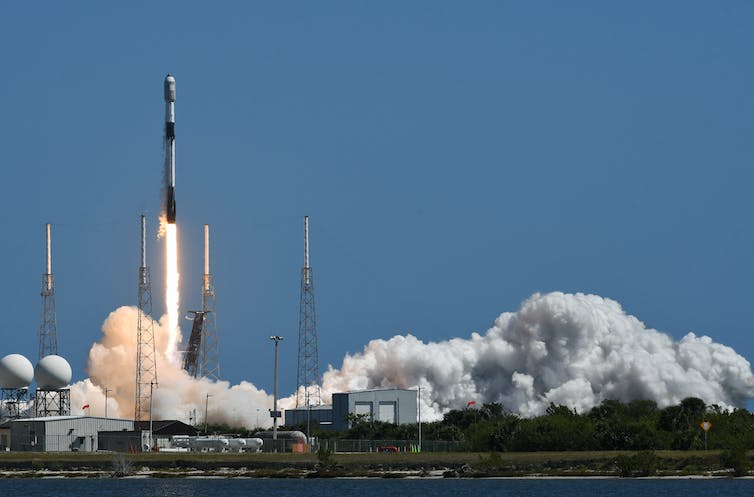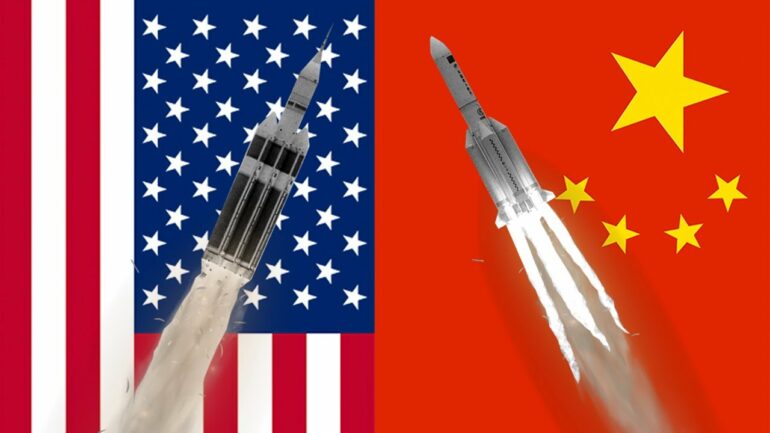Headlines proclaiming the rise of a new “space race” between the U.S. and China have become common in news coverage following many of the exciting launches in recent years. Experts have pointed to China’s rapid advancements in space as evidence of an emerging landscape where China is directly competing with the U.S. for supremacy.
This idea of a space race between China and the U.S. sounds convincing given the broader narrative of China’s rise, but how accurate is it? As a professor who studies space and international relations, my research aims to quantify the power and capabilities of different nations in space. When I look at various capacities, the data paints a much more complex picture than a tight space race between the U.S. and China. At least for now, the reality looks more like what I call a complex hegemony – one state, the U.S., is still dominating in key space capabilities, and this lead is further amplified by a strong network of partners.

SpaceX rockets carry hundreds of private satellites into orbit each year from the seven active U.S. spaceports.
SOPA Images/LightRocket via Getty Images
A clear leader makes for a boring race
Calling the current situation a race implies that the U.S. and China have roughly equal capabilities in space. But in several key areas, the U.S. is far ahead not only of China, but of all other spacefaring nations combined.
Starting with spending: In 2021, the U.S. space budget was roughly US$59.8 billion. China has been investing heavily in space and rocket technology over the last decade and has doubled its spending in the last five years. But with an estimated budget of $16.18 billion in 2021, it is still spending less than a third of the U.S. budget.
The U.S. also leads significantly in the number of active satellites. Currently, there are 5,465 total operational satellites in orbit around Earth. The U.S. operates 3,433, or 63% of those. In contrast, China has 541.
Similarly, the U.S. has more active spaceports than China. With seven operational launch sites at home and abroad and at least 13 additional spaceports in development, the U.S. has more options to launch payloads into various orbits. In contrast, China has only four operational spaceports with two more planned, all located within its own territory.
Parity with nuance
While the U.S. may have a clear advantage over China in many areas of space, in some measures, the differences between the two countries are more nuanced.
In 2021, for instance, China attempted 55 orbital launches, four more than the U.S.‘s 51. The total numbers may be similar, but the rockets carried very different payloads to orbit. The vast majority – 84% – of Chinese launches had government or military payloads intended mostly for electronic intelligence and optical imaging. Meanwhile, in the U.S., 61% of launches were for nonmilitary, academic or commercial use, predominantly for Earth observation or…
